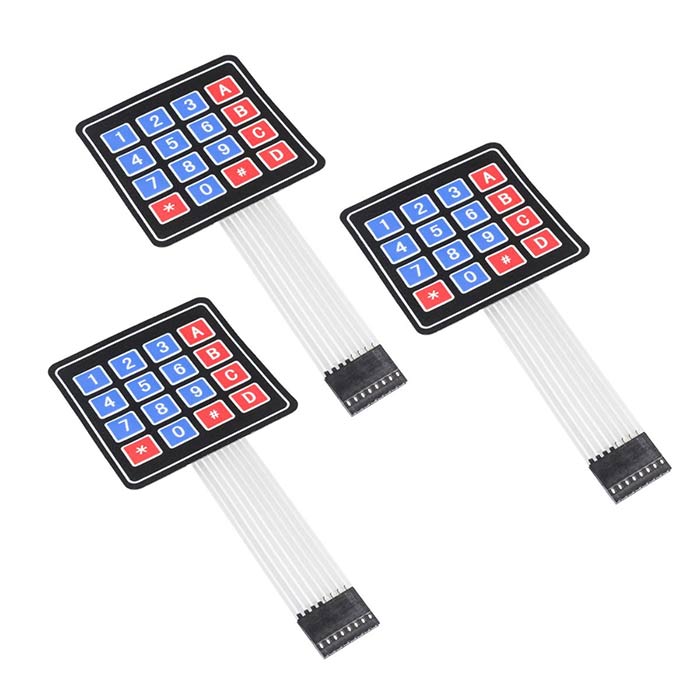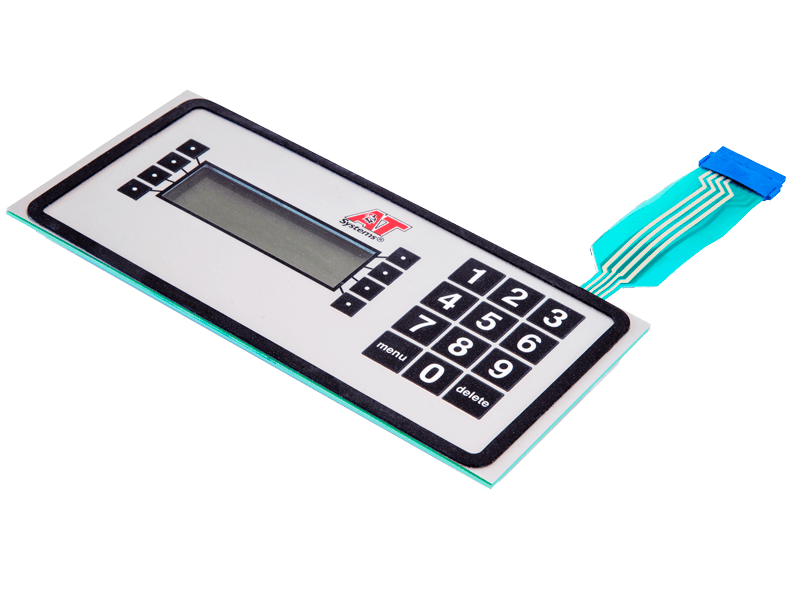All Concerning Membrane Layer Switch: Comprehending Its Design and Performance
When you think of the control interfaces in contemporary devices, membrane layer switches usually enter your mind. These elements are more than just switches; they mix layout and functionality perfectly. Understanding just how they function and what makes them effective can alter your point of view on day-to-day electronic devices. There are nuances to their layout and performance that you might not be conscious of. Let's explore what collections membrane layer switches in addition to various other control systems.
What Are Membrane Switches?

Their smooth nature makes them easy to tidy and resistant to dust and wetness, an important feature in many environments. Membrane layer buttons can additionally be personalized pertaining to form, size, and graphics, enabling manufacturers to produce unique user interfaces customized to specific products. And also, they're light-weight and slim, which assists in lessening the total bulk of gadgets. Overall, membrane layer switches play a substantial duty in enhancing individual experience across a wide selection of applications.
How Membrane Layer Switches Over Job
When you press a trick on a membrane switch, it turns on a simple yet effective device. The top layer, often made of adaptable material, lowers onto a conductive layer under it. This action bridges the space between conductive traces, finishing an electric circuit. As quickly as the circuit closes, it sends a signal to the tool's controller, which translates your input.
You'll observe that the responsive feedback varies based on the switch design, providing either a soft click or a much more noticable response. Once you launch the key, the membrane layer returns to its initial placement, reopening the circuit and quiting the signal. This procedure happens nearly immediately, making sure a responsive user experience.
Membrane buttons are preferred as a result of their resilience and resistance to dirt and wetness, making them excellent for various applications, from household home appliances to clinical tools. Recognizing this operation helps you value their prevalent usage.
Trick Elements of Membrane Layer Switches
Understanding the vital elements of membrane buttons is fundamental for understanding their functionality and layout. The protective layer guards against environmental elements and put on, prolonging the button's life expectancy. By understanding these parts, you'll get insight right into how membrane switches over operate and their relevance in different applications.
Products Utilized in Membrane Switch Design
The performance and resilience of membrane switches over heavily rely on the materials made use of in their layout. You commonly experience polyester and polycarbonate as key substrates because of their excellent toughness and flexibility. These products resist scratches and chemicals, making them excellent for demanding settings.
The conductive layers often use silver or carbon, picked for their reliability and conductivity. membrane switch manufacturer. Silver gives premium performance, while carbon is an affordable choice. For the overlay, you might take into consideration a matte or glossy coating, depending upon your visual needs and individual experience
Adhesives play an essential duty too; they bond layers firmly and assure longevity. Ensure to choose adhesives that withstand environmental aspects like temperature level and moisture. Don't neglect the value of a good printing method for graphics, as it improves both performance and aesthetic allure. Selecting the best materials will guarantee your membrane switch stands the examination of time.
Design Factors To Consider for Membrane Switches
While developing membrane switches, it's crucial to take into account numerous elements that influence their capability and individual experience. Start by concentrating on the layout and switch dimension; make specific they're instinctive and simple to browse.
Don't ignore the visuals design; clear labeling and shade comparison are considerable for exposure. Verify your layout accommodates environmental variables, like dampness or temperature variations, which might influence efficiency. Ultimately, bear in mind the relevance of testing prototypes with genuine customers to gather feedback and make essential adjustments. This repetitive procedure aids you refine the style, validating it fulfills both useful and visual requirements efficiently. By meticulously taking into consideration these aspects, you'll produce a membrane switch that improves usability and fulfillment.
Applications of Membrane Layer Buttons
Membrane layer switches are versatile parts found in numerous applications, from commercial devices to consumer electronic devices. You'll see their effect in makers that need durable user interfaces and in tools that benefit from sleek designs. Understanding these applications aids you appreciate the functionality and practicality of membrane layer switches in daily technology.
Industrial Devices Usage
When you're looking to boost the capability of industrial devices, visit this page membrane layer switches provide a reliable option that integrates resilience with straightforward design. These switches are ideal for rough environments, offering resistance to dirt, dampness, and chemicals. Embrace membrane buttons to streamline your operations and enhance total efficiency.
Customer Electronic Devices Integration
In the domain name of customer electronics, membrane layer switches play a necessary function in improving user communication and device capability. Membrane switches likewise guarantee durability and resistance to dirt and moisture, extending the life-span of your electronics. By picking membrane buttons, you boost not simply the capability however additionally the style of your tools, making daily interactions smooth and satisfying.
Advantages and Negative Aspects of Membrane Buttons
While membrane layer buttons offer a variety of benefits, they additionally come with some disadvantages that you ought to think about. One significant advantage is their small style, making them discover this info here ideal for space-constrained applications.

Nevertheless, there are downsides. Membrane switches can have a shorter life expectancy contrasted to mechanical buttons, specifically under hefty usage. They can likewise be much less tactile, which could impact individual comments during procedure. If harmed, fixing them can be difficult and typically needs total replacement. Ultimately, their level of sensitivity to severe temperatures and environmental conditions might restrict their effectiveness in certain setups. Balancing these advantages and disadvantages will certainly assist you identify if membrane layer buttons are the ideal fit for your task.
Frequently Asked Inquiries
The Length Of Time Do Membrane Layer Switches Generally Last?
Membrane changes commonly last between article 5 to 10 years, depending upon usage and ecological conditions. You'll want to assess variables like wear, exposure to moisture, and temperature level fluctuations to gauge their long life efficiently.
Can Membrane Layer Switches Be Personalized for Specific Layouts?
Yes, you can customize membrane buttons to fit specific styles (membrane switch manufacturer). You'll have the flexibility to choose colors, forms, and formats that match your project's requirements, guaranteeing they blend flawlessly with your overall aesthetic
What Is the Expense Variety for Membrane Layer Switch Over Production?
The cost variety for membrane layer switch production commonly falls between $1 and $10 per system, relying on aspects like layout intricacy, quantity, and materials. You can get quotes from suppliers to find the most effective choice.

Are Membrane Switches Over Water Resistant or Immune?
Membrane layer buttons can be designed to be waterproof or resistant, depending upon products utilized and building and construction approaches. If you require them for damp settings, ensure you specify those needs during the style process.
Just How Do Membrane Layer Switches Compare to Standard Buttons?
Membrane buttons are usually thinner and more versatile than standard buttons, using a smooth design. They're commonly much easier to clean up and incorporate, yet may not supply the tactile feedback you're used to with mechanical options.
Verdict
